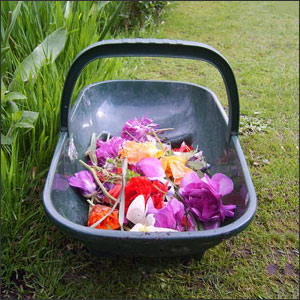Deadheading Made Easy – How to Supercharge Your Garden

What do gardeners mean when they use the term deadheading?
How can I deadhead my flowers for maximum success?
Often times when I’m writing monthly gardening tips, I find myself using this word – deadheading. If you are new to gardening or have never heard that term it might throw you off quite a bit.
For today’s article, I would like to take some time to make sure we explain what deadheading is, how to do it, and why it’s so important to your garden.
What is Deadheading?
This term is actually really simple. It just means as it fades you remove the plant’s flowers. You deadhead when the flower has bloomed and it’s beginning to die or has already died.
Why Deadhead?
Below you’ll find some powerful benefits of deadheading.
- Deadheading will actually encourage roses, annuals and other flower to continue to bloom.
- With some flowers, deadheading will cause the plants to look neater.
- According to Better Homes and Gardens,
“Removing the flowers as they fade interrupts the chemical signals sent by the developing seeds, and the plant usually tries to bloom again.”
How to Deadhead
Deadheading is also easy to do and can be done one of two ways. The first way is to prune the spent flowers by clipping them off. The second way to do it is by using your fingers to pinch them off.
In an article published by Burpee, the author points out that with some flowers like geranium or coreopsis it may be overwhelming to trying a pinch off each small flower. They recommend in these situations to shear the plant with a blade hedge.
Summary
A term like deadheading can be misleading, but it doesn’t have to be. Deadheading is simple once you understand the term and it can bring a multitude of benefits to your garden.



